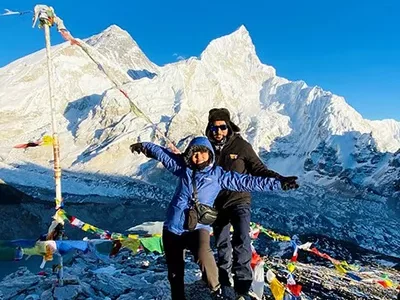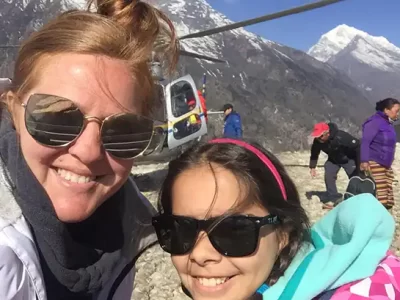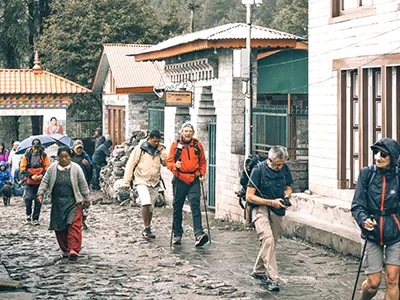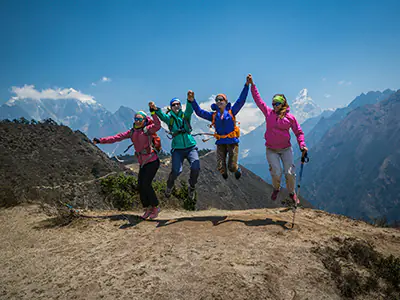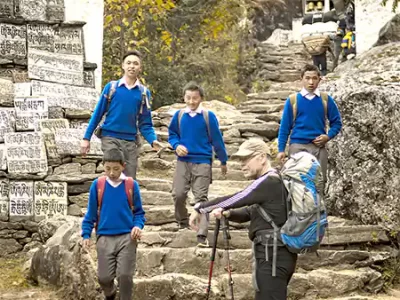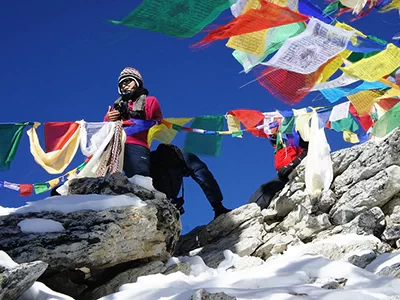The Sagarmatha National Park is a wonder where the Himalayas exhibit their most captivating beauty in Nepal’s Solu-Khumbu region. Established in 1976, it protects a large section of the mountain range, including the iconic Mount Everest, known locally as Sagarmatha. While Mount Everest is an internationally recognized symbol of exploration, the park also supports different wildlife, breathtaking landscapes, and Sherpa culture.

In addition, in 1979, UNESCO acknowledged the significance of this territory by awarding it World Heritage Site status. It underscores the park’s crucial role in conserving its natural splendor and cultural legacy. Carrying some of the rarest species amidst its unspoiled ecosystems within its boundaries and maintaining a balance between humanity and nature are the main points for scientific expeditions and preservation practices.
Location in the Solu-Khumbu Region
Sagarmatha National Park, located in the Solu-Khumbu district of northeastern Nepal, showcases the harsh topography of the region. This Sagarmatha National Park location is at the heart of the Himalayas.
This place has steep valleys, glaciers at high altitudes, and tall mountains in which the Sherpa people reside. Hence, Sherpas are closely related to the Himalayas and are considered exceptional climbers. Therefore, the park’s dramatic outline, characterized by freezing rivers and deep gorges, illustrates how mighty forces beyond man made it part of the reasons above.
UNESCO World Heritage Status and Global Importance
Sagarmatha National Park’s designation as a World Heritage Site by UNESCO indicates its global importance. Sagarmatha National Park is home to several endangered species, and Sagarmatha National Park animals include the snow leopard, red panda, and Himalayan musk deer. For geologists, its strange rocks and glacial regions are a source of information on Earth’s past and climatic changes.
Everest Base Camp Trek
Everest Base Camp Trek with Helicopter Return
Luxury Everest Base Camp Trek
Geography and Topography of Sagarmatha National Park
Sagarmatha National Park, often called “Mount Everest National Park,” showcases a breathtaking topography sculpted by immense geological forces. The park’s landscape unfolds a spectacular panorama of towering peaks, plunging valleys, and sprawling glaciers.
Majestic Peaks
- Mount Everest: The park’s crown jewel, Mount Everest, reaches a staggering 8,848 meters (29,029 ft) into the sky.
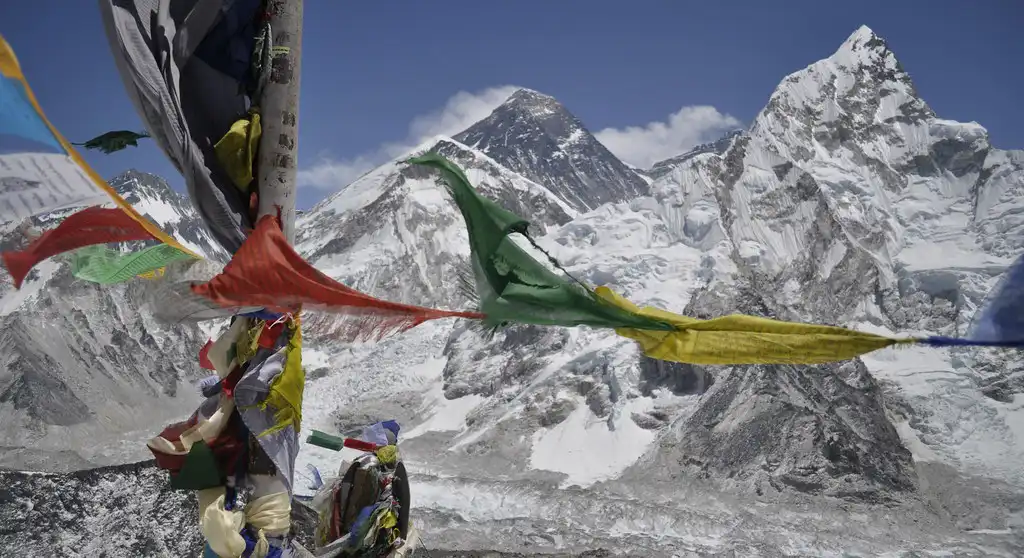
Its legendary summit, the highest point on Earth, beckons adventurers and climbers worldwide.
- Lhotse: As the fourth highest mountain globally, Lhotse, standing tall at 8,516 meters (27,939 ft), shares a ridge with Everest and poses a significant challenge for mountaineers.
- Nuptse: This majestic peak, soaring to 7,861 meters (25,791 ft), unveils breathtaking vistas of Everest and the surrounding scenery. Its sharp summit and demanding routes attract seasoned climbers.
Altitude’s Dance
Sagarmatha National Park has a substantial altitudinal range, from a low of about 2845 m (9334 ft) at Monjo to an incredible maximum of 8848 m (29029 ft) on top of Mount Everest, with all the heights in between.
The wide altitudinal ranges create different ecosystems, including many flora and fauna that have evolved to withstand these harsh conditions.
Rivers, Glaciers, and the Valleys They Shape
- Rivers: The Park features a network of waterways, including the Dudh Koshi, Bhote Koshi, and Imja Khola. These rivers, nourished by melting glaciers and snow, carve their way through the landscape, creating deep gorges and valleys.
- Glaciers: In the park, there are numerous glaciers, one of which is the Khumbu Glacier, among the biggest in the Himalayas.
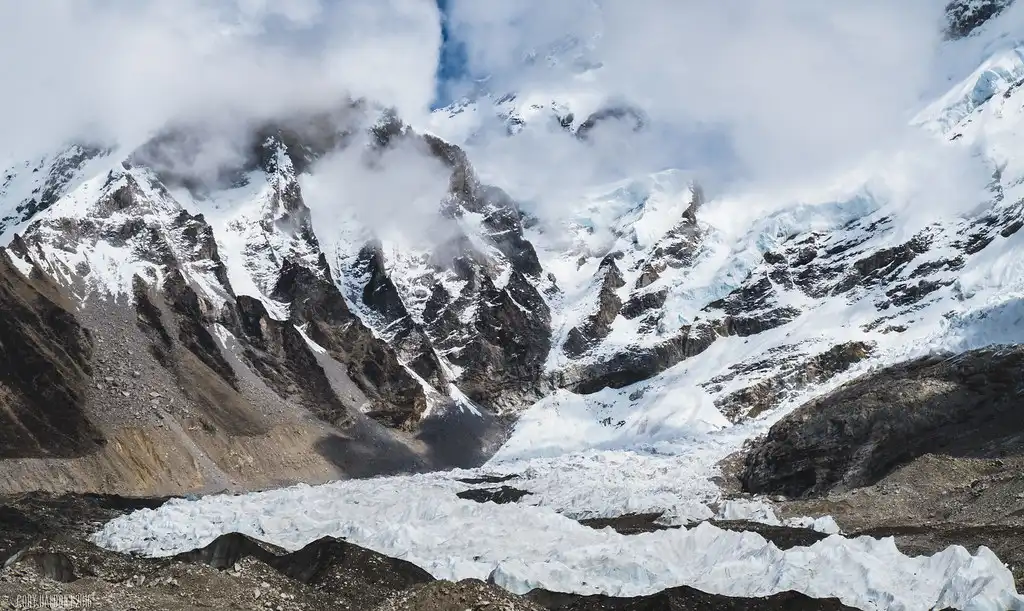
These giant glaciers play a critical role in forming soils and water supply for the region.
- Valleys: The Park boasts several picturesque valleys, such as the Khumbu Valley, Gokyo Valley, and Thame Valley.
Haven for Himalayan Biodiversity
Sagarmatha National Park, also called Mount Everest National Park, isn’t just about majestic peaks. It’s a sanctuary teeming with life, showcasing a remarkable array of plants and animals adapted to the challenging high-altitude environment.
Floral Tapestry: From Lush Valleys to Alpine Heights
The park’s diverse topography supports a wide range of plant species, changing dramatically with altitude:
- Lower Altitudes (up to 3,500 meters): Here, you’ll find forests of rhododendron, birch, juniper, and bamboo. These areas burst with color in spring when the rhododendrons bloom.
- Mid-Altitudes (3,500 – 4,500 meters): Fir, pine, and juniper trees dominate these elevations. The undergrowth thins as you climb higher.
- Alpine Zone (above 4,500 meters): Harsh conditions limit plant life to hardy species like mosses, lichens, and cushion plants. These resilient plants cling to rocks and survive in extreme cold and wind.
Wildlife: Guardians of the High Peaks
Sagarmatha National Park provides refuge to a variety of wildlife, some rare and endangered:
- Snow Leopard: This elusive predator reigns supreme in the high alpine zones. Its thick fur and robust build allow it to thrive in the snowy wilderness.
- Red Panda: This adorable creature inhabits the bamboo forests at lower elevations.
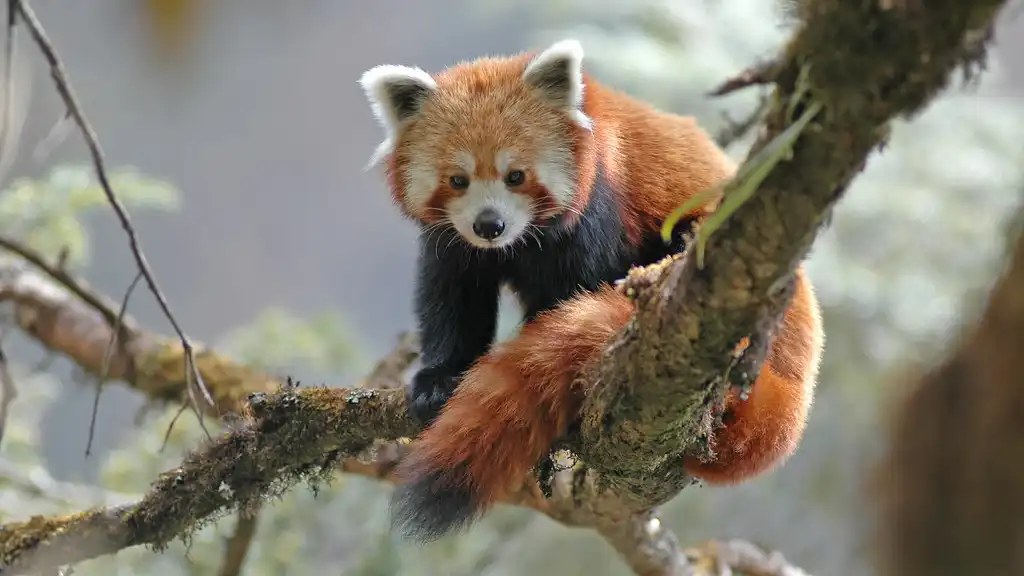
Its reddish-brown fur and bushy tail make it instantly recognizable.
- Himalayan Tahr: These agile mountain goats easily navigate the cliffs, and their coats protect them from the cold.
- Other Notable Species: The park also supports musk deer, Himalayan black bears, langur monkeys, and various bird species, including the colorful Impeyan pheasant and the majestic lammergeier vulture.
Conservation Efforts: Protecting a Fragile Ecosystem
Preserving Sagarmatha National Park’s biodiversity is crucial. Numerous organizations and initiatives are working to safeguard this precious environment:
- Park Management: The Sagarmatha National Park Buffer Zone Management Committee promotes sustainable tourism and reduces human impact on the ecosystem.
- Anti-Poaching Measures: Strict regulations and patrols aim to combat poaching and protect endangered species like the snow leopard.
- Community Involvement: Local communities play an essential role in conservation efforts and are involved in sustainable resource management and ecotourism initiatives.
Everest Base Camp Trek for Beginners
Everest Panorama Trek
Everest High Pass Trek
Trekking in Sagarmatha National Park: Trails to the Top of the World
This Park, also called Mount Everest National Park, boasts some of the planet’s most legendary and demanding treks. The trails wind through awe-inspiring landscapes, charming Sherpa villages, and ancient monasteries, culminating in breathtaking Himalayan vistas.
Popular Routes to Explore
1. Everest Base Camp Trek
The Everest Base Camp trek leads you to the foot of Mount Everest, the planet’s highest summit.
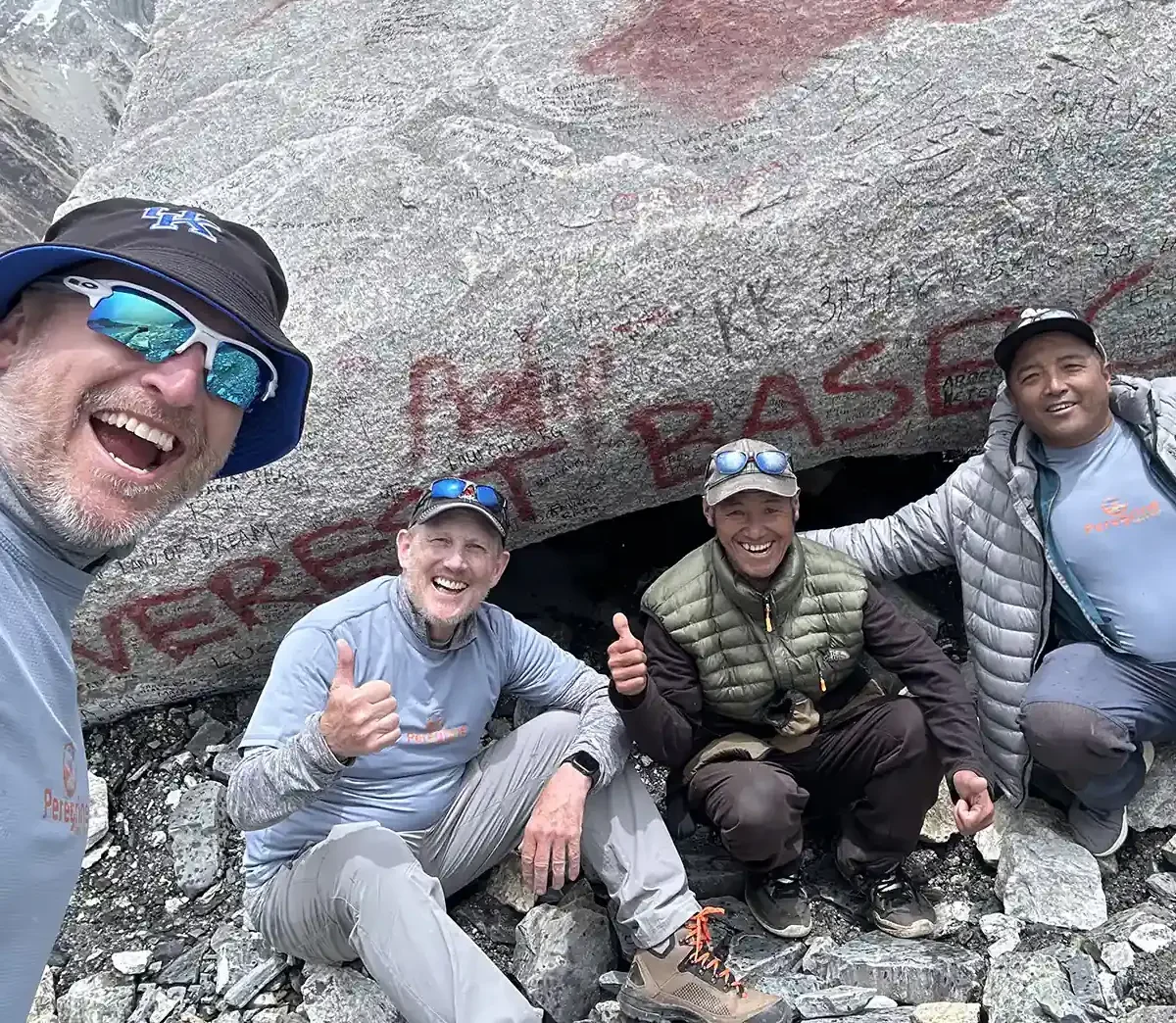
You will experience the rich Sherpa culture, visit the sacred Tengboche Monastery, and witness the awe-inspiring Khumbu Icefall.
- Difficulty: Moderate to challenging
- Duration: 12-14 days
- Best Time: Spring (March-May) and Autumn (September-November)
2. Gokyo Lakes Trek
This picturesque trek takes you to the mesmerizing Gokyo Lakes, offering panoramic views of Everest, Cho Oyu, and other majestic peaks.
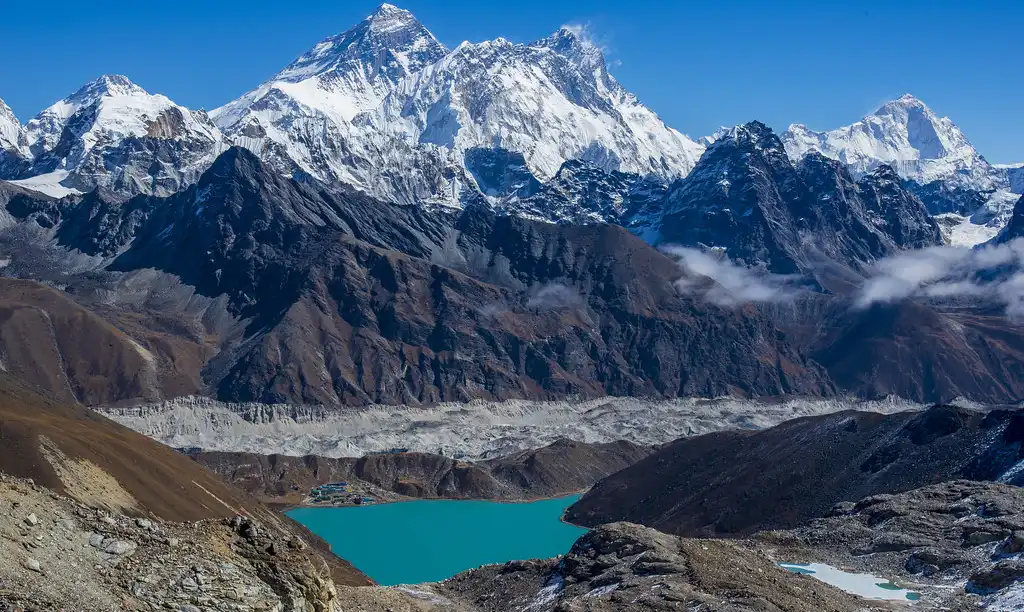
Ascend Gokyo Ri for the ultimate vantage point.
- Difficulty: Moderate to challenging
- Duration: 12-13 days
- Best Time: Spring (March-May) and Autumn (September-November)
3. Three Passes Trek
Begin on this challenging adventure, traversing three high mountain passes: Renjo La, Cho La, and Kongma La. This trek combines the highlights of the Everest Base Camp and Gokyo Lakes treks.
- Difficulty: Challenging
- Duration: 17-20 days
- Best Time: Spring (March-May) and Autumn (September-November)
Other Treks to Consider
- Everest View Trek: The Everest View Trek presents a shorter, more straightforward option for those with limited time or seeking a less strenuous experience.
- Pikey Peak Trek: Discover fantastic views of Everest and other peaks, with the bonus of quieter trails compared to the main routes.
Trekking Levels and Time Commitment
- Easy: Perfect for beginners, featuring gentle ascents and descents. Typically lasts 3-5 days.
- Moderate: Requires decent fitness, with some steep climbs and longer trekking days. It usually takes 7-12 days.
- Challenging: Involves high altitudes, strenuous climbs, and potential weather challenges. Plan for 12-21 days.
Ideal Seasons for Trekking
- Spring (March-May): Clear skies, pleasant temperatures, and blooming rhododendrons make this a popular choice.
- Autumn (September-November): Another great season with stable weather, clear views, and vibrant fall colors.
- Winter (December-February): Enjoy quieter trails, but be prepared for cold temperatures and snow.
- Monsoon (June-August): Trails can become muddy and slippery, and clouds might obscure views.
Permits and Entry Requirements
- TIMS Card (Trekkers’ Information Management System): Essential for all trekkers in the Everest region.
- Park Entry Permit: Mandatory for entering the park.
- Local Area Permit: This may be necessary for specific areas within the park.
Important Reminders
- Acclimatization: Gradual acclimatization to high altitudes is crucial to prevent altitude sickness.
- Physical Fitness: Trekking in this challenging terrain demands good physical fitness.
- Guides and Porters: We strongly suggest everyone hire a local guide and porter for your safety and ease of navigation and to gain valuable cultural insights.
- Environmental Respect: Embrace responsible trekking practices to ensure minimal impact on this fragile Himalayan ecosystem.
Sherpa Heritage: Guardians of the Himalayas
Sagarmatha National Park isn’t just a natural wonder and a living testament to the Sherpa people’s rich culture and heritage. The Sherpas have inhabited this region for centuries, deeply intertwined with the mountains.
Their mountaineering expertise, resilience, and spiritual connection to the land have played a vital role in exploring and preserving the Everest region.
Monasteries and Cultural Sites: Echoes of Spirituality
The park houses several significant cultural and religious sites, offering a glimpse into the Sherpa people’s Buddhist traditions.
- Tengboche Monastery: Perched on a hilltop overlooking Everest, Tengboche Monastery is the Khumbu region’s largest and most revered monastery.
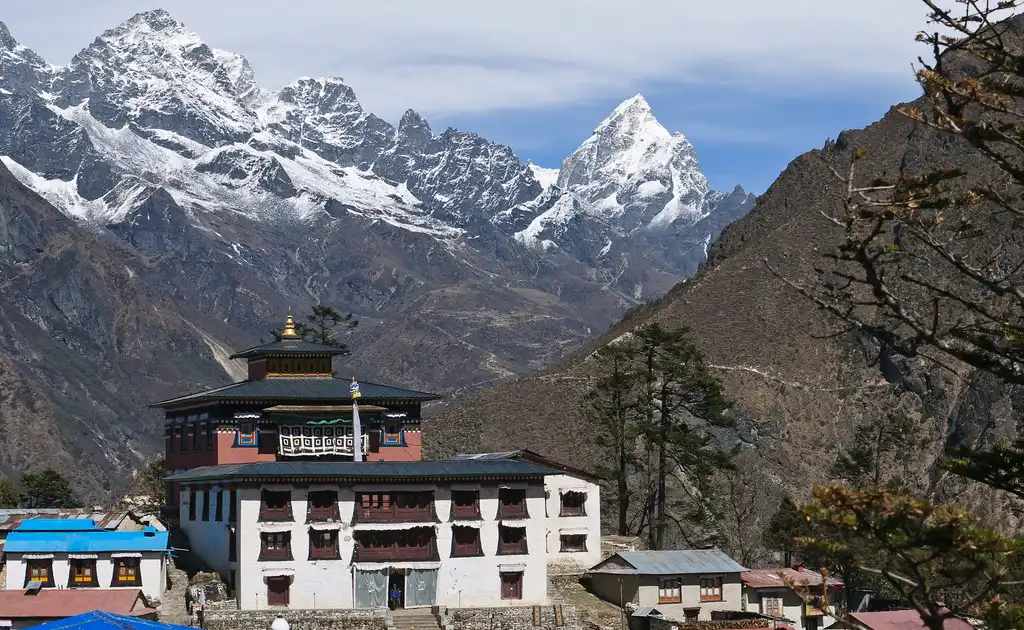
It’s a center of spiritual activity where monks perform daily rituals and prayers.
- Other Monasteries: The Park also boasts smaller monasteries and chortens (Buddhist shrines), each with unique charm and spiritual significance.
Festivals and Traditions: A Vibrant Tapestry
The Sherpa people celebrate festivals yearly, showcasing their vibrant culture and deep-rooted beliefs.
- Dumje: This festival, held in June, marks the beginning of the monsoon season. Sherpas perform traditional dances and offer prayers for a good harvest.
- Mani Rimdu: Celebrated in autumn, Mani Rimdu is a colorful festival featuring masked dances, prayers, and religious ceremonies. It’s a time for community gatherings and spiritual renewal.
Visitor Information
Getting There
- Flight to Lukla:
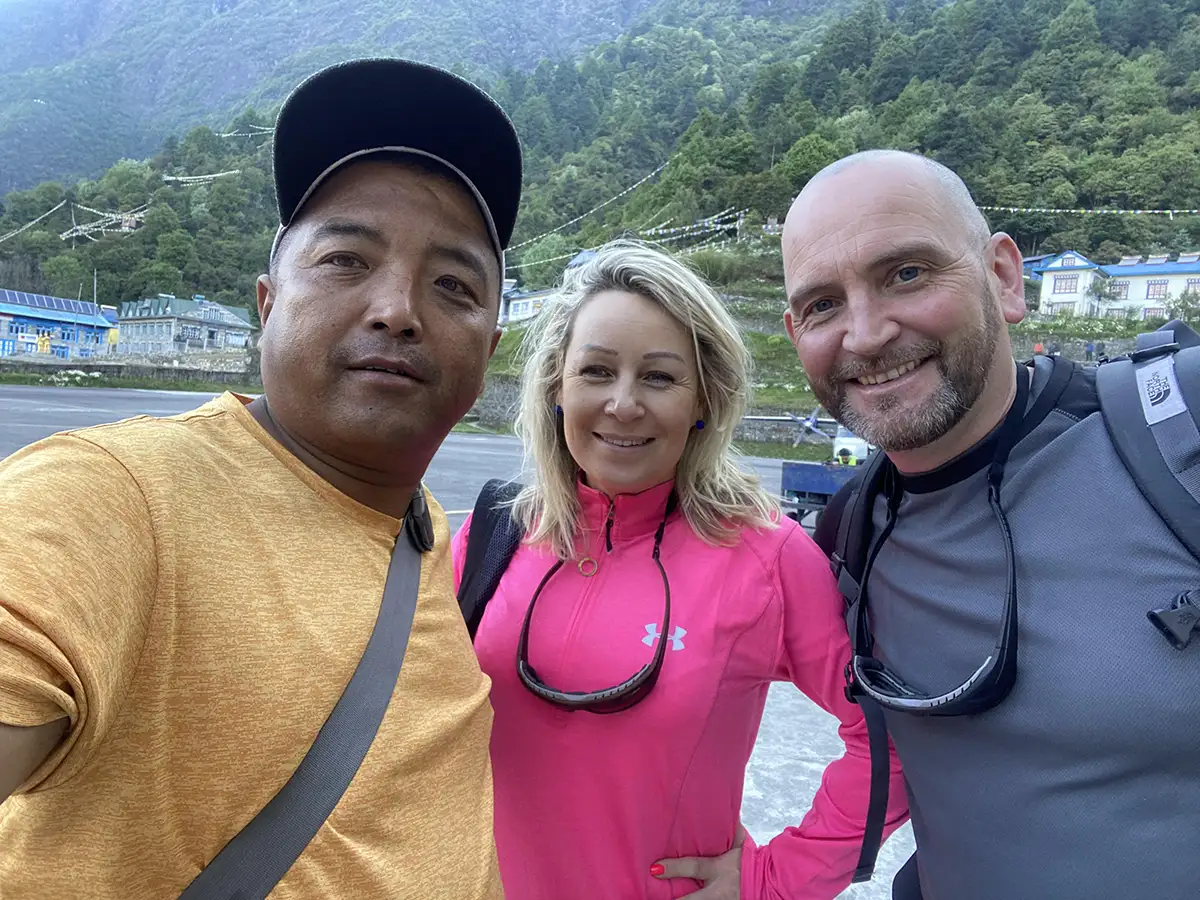
The most common way to reach the park is by taking a scenic flight from Kathmandu to Lukla, the gateway to the Everest region.
- Trek from Jiri or Salleri: For those seeking a longer and more immersive experience, trekking from Jiri or Salleri is an option. These treks take you through diverse landscapes and Sherpa villages, allowing for gradual acclimatization.
Accommodation
- Tea Houses and Lodges: Along the popular trekking routes, you’ll find numerous tea houses and lodges offering basic accommodation and meals.
- Camping: Camping is also possible in designated areas within the park. However, it’s essential to practice responsible camping and minimize your impact on the environment.
Park Regulations
- Permits: Trekkers need a TIMS card (Trekkers’ Information Management System) and a Sagarmatha National Park entry permit. They might also need to obtain extra permits for specific areas within the park.
- Entrance Fees: The park charges entrance fees, contributing to conservation and management efforts.
- Waste Management: It’s crucial to follow proper waste disposal practices and avoid leaving any trash behind.
Responsible Tourism: Treading Lightly
- Minimize Waste: Help conserve the environment by using reusable water bottles and avoiding single-use plastics.
- Respect Local Culture: Dress modestly and be mindful of local customs and traditions.
- Support the Local Economy: Contribute to the local community by buying local products and using local businesses.
- Stay on Designated Trails: Avoid venturing off trails to protect the fragile ecosystem.
Weather Wisdom and Trail Navigation in the Himalayas
The climate at Sagarmatha National Park, often called Mount Everest National Park, is variable due to its high elevation and mountainous terrain. Knowing these patterns is essential to mapping out your adventure.
- Spring (March-May): Mild temperatures, clear skies, and blooming rhododendrons paint a beautiful backdrop for your trek. Days are usually warm, but remember, nights can still be chilly.
- Autumn (September-November): Another prime season, autumn offers stable weather, crystal-clear mountain views, and a vibrant tapestry of fall colors. While days are comfortable, temperatures plummet at night.
- Winter (December-February): Brace yourself for cold temperatures, snow, and the occasional storm. Trails are less crowded, but trekking becomes more demanding.
- Monsoon (June-August): The monsoon season brings heavy rains, transforming trails into muddy, slippery paths. Cloud cover might obscure the majestic views.
Choosing the Perfect Season
- Spring and Autumn: These seasons present ideal trekking conditions, with pleasant temperatures, clear skies, and predictable weather.
- Winter: If you’re an experienced trekker seeking solitude and are well-prepared for cold weather, winter offers a unique experience.
- Monsoon: Due to challenging trail conditions and limited visibility, trekking during the monsoon season is not recommended.
Packing Smart for the Mountains
Pack according to the season, but keep in mind that layering is your best friend in the ever-changing mountain climate:
Spring/Autumn
- If you want to protect yourself against the elements, pack a water- and windproof jacket and pants.
- A fleece jacket or warm sweater is necessary for cooler temperatures.
- Select durable hiking boots offering good ankle support for traversing the terrain.
- Choose comfortable trekking pants, allowing for easy movement.
- Include moisture-wicking base layers to stay dry.
- Wear a warm hat and gloves when the mornings and evenings are cold.
- Apply sunglasses and sunscreen to protect your eyes and skin.
Winter
- Add a down jacket or insulated parka to your spring/autumn gear to combat the cold.
- Pack thermal base layers for extra warmth.
- Consider insulated pants for added protection from the cold.
- Gaiters protect your boots from snow.
- If you plan on trekking on icy trails, crampons might be necessary.
Monsoon
- Add a waterproof backpack cover to your spring/autumn packing list to safeguard your gear.
- Bring a rain poncho or umbrella to stay dry during showers.
- Opt for quick-drying clothing to ensure comfort even when wet.
Maps and Navigation: Finding Your Way
Maps are essential tools for navigating the trails in the park. You have a few options:
- Paper Maps: Pick detailed topographical maps from reliable trekking shops in Kathmandu or Namche Bazaar.
- Digital Maps: Download offline maps and GPS navigation apps to your smartphone or GPS device for easy access on the go.
Guided Tours: Expertise at Your Service
Hiring a local guide offers several advantages:
- Safety First: Guides possess in-depth knowledge of the terrain, weather patterns, and potential hazards, ensuring safety throughout the trek.
- Navigation Made Easy: Guides know the trails like the back of their hand, helping you avoid getting lost and suggesting alternative routes if necessary.
- Cultural Immersion: Guides can share fascinating insights into the Sherpa culture, traditions, and local way of life.
Independent Trekkers: Safety First
If you’re venturing out on your own, prioritize safety with these precautions:
- Share Your Plans: Inform someone about your itinerary and expected return date.
- Trek with a Buddy: Avoid trekking alone, especially on challenging routes.
- Acclimatize Gradually: Take your time ascending to higher altitudes to prevent altitude sickness.
- Pack Essentials: Carry a first-aid kit, water purification tablets, and extra food for unexpected situations.
- Respect the Environment: Leave no trace and adhere to responsible trekking practices.
Conservation Challenges: A Fragile Ecosystem Under Pressure
Sagarmatha National Park, renowned as the home of Mount Everest and a haven for biodiversity, faces critical conservation hurdles. Climate change, the impact of tourism, and waste management pose severe threats to this delicate environment.
- The Toll of Climate Change: Rising temperatures accelerate glacial melt, affecting water availability and increasing natural hazards like floods and landslides.
- Tourism’s Footprint: While tourism boosts the local economy, it also strains the park’s infrastructure and natural resources. Overcrowding on trails and improper waste disposal can harm the environment.
- Waste Management Woes: The influx of trekkers and climbers generates substantial waste, including plastic bottles, food packaging, and human waste. Proper disposal and management are essential to preserve the park’s pristine beauty.
Conservation in Action
The Nepalese government, local communities, and international organizations actively protect Sagarmatha National Park.
- Government Takes the Lead: The government has implemented strict regulations to manage tourism, curb waste, and shield endangered species.
- Community-Based Conservation: Local communities are integral to conservation efforts, participating in sustainable tourism initiatives and responsible natural resource management.
- International Collaboration: Organizations like the Sagarmatha Pollution Control Committee (SPCC) actively address waste management issues and foster environmental awareness.
Your Role in Conservation
As a visitor, you can contribute significantly to the park’s conservation.
- Minimize Your Footprint: Carry reusable water bottles and avoid single-use plastics. Dispose of all waste responsibly, leaving no trace behind.
- Respect the Local Culture: Dress modestly, learn a few basic Nepali phrases, and be mindful of local customs and traditions.
- Support the Local Economy by Choosing locally owned tea houses, dining at local restaurants, and purchasing locally made products.
- Partner with Local Guides and Porters: Hiring local guides and porters not only benefits the local economy but also ensures you have expert guidance on the trails.
- Practice Responsible Trekking: Stick to designated trails, avoid disturbing wildlife, and respect the natural environment.
Conclusion: A Shared Responsibility
Sagarmatha National Park is a precious natural and cultural gem that demands our utmost care and respect. It’s a place where the raw beauty of the Himalayas intertwines with the rich heritage of the Sherpa people.
By embracing sustainable tourism and actively supporting conservation efforts, we can safeguard this magnificent park for future generations to cherish and explore.

